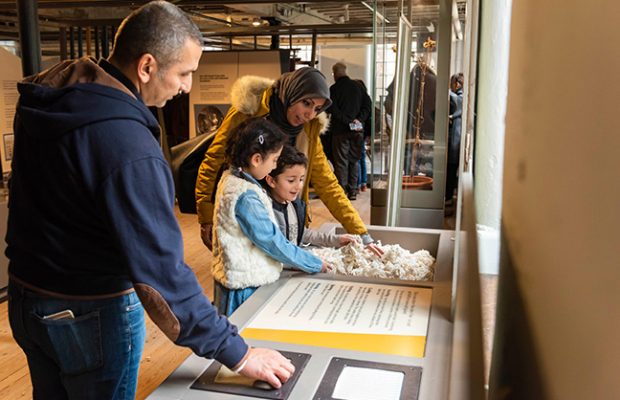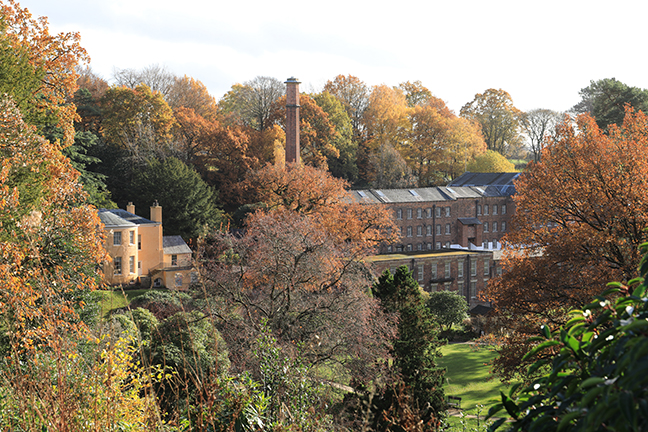- Home
- News
- What’s On
- Activities for Children
- Arts & Crafts
- Autos and Bikes
- Business events
- Car Boot & Auctions
- Charity events
- Churches & Religious
- Comedy
- Dance
- Days out & Local interest
- Education
- Exhibition
- Film
- Gardening & Horticulture
- Health
- Markets & Fairs
- Music
- Nature & Environment
- Spiritual
- Sport
- Talks and Discussions
- Theatre and Drama
- Business
- Local Information
- Jobs
- Deaths
- Charity events
- Contact Us
‘A Healthy Profit’

One of Manchester’s greatest mills which stood at the very cusp of the Industrial Revolution is delving deeper into the working conditions of those who lived and worked at Quarry Bank in a new exhibition, ‘A Healthy Profit.’ Opening this month at the National Trust attraction, the exhibition delves into the realities of mill life and the physical, mental and emotional toil that kept the wheels of this industrial powerhouse turning.
At Quarry Bank, mill owner Samuel Greg hired Peter Holland as the first known physician to work in a factory. This was partly motivated by genuine concern for the poor and partly by the mill owners’ religious beliefs as Unitarians. However, a healthy workforce was also a productive workforce, ensuring healthier profits.
In this new exhibition, visitors can journey through different parts of the body, including the brain, eyes, ears, lungs, and skeleton to uncover how long, hard days in the mill affected the workers. Historical medical equipment including glass eyes and medical chests complete with powders and potions, as well as leech jars, inhalers and ear trumpets from the Thackray Medical Museum and Manchester Medical Museum will be on display. For the very first time, visitors can also see original documents from the mill archives accounting for accidents, injuries and even causes of death at Quarry Bank.
Exploring the connections between people, place and health both past and present, the exhibition also considers how the body is impacted today. The effects of pollution, screen time, earphones and diet, as well as the significance of the environment and outdoor spaces feature in the exhibition.
Suzanne Kellett, Programming Manager at Quarry Bank says, ‘We’re excited to be launching this new exhibition exploring the historical pressures the human body was put through, whilst drawing parallels with our lives today. Our visitors will discover more about what working life was really like for the men, women and children of Quarry Bank and we’re encouraging them to reflect on their own wellbeing as well. There are lots of interactive elements for families which bring the subject to life and we’re looking forward to seeing what they learn along the way.”
The National Trust has worked closely with the University of Manchester on new academic research looking into how the toil of mill work affected the body. The research has uncovered stories of what life was really like for those at Quarry Bank and how the mill’s healthy profit wasn’t necessarily driven by a healthy workforce. These findings have helped shape the new exhibition opening this autumn.
Families visiting the exhibition will find plenty of interactive features including a giant brain revealing more about its different functions with a chance to put their concentration to the test and see how they compare to a mill worker. Visitors can also have a go at mee-mawing – a form of speech invented by the mill workers using exaggerated movements to allow lip reading over the clatter and bustle of the noisy machines.
Throughout October half term there will be themed activities and science experiments getting families closer to what it was like to live and work at Quarry Bank.
Inside the mill, visitors can see the historic machinery thunder into action and feel the floors shake beneath their feet. Guided tours of the Apprentice House and workers cottage also show where the men, women and children who worked at Quarry Bank lived, ate and slept after toiling for twelve hours a day in the mill.
The new exhibition ‘A Healthy Profit’ opens on 19 October 2019 and runs until 19 April 2020. For more information visit nationaltrust.org.uk/quarry-bank or followhttps://www.nationaltrust.org.uk/quarry-bank/features/a-healthy-profit-exhibition


You must be logged in to post a comment Login